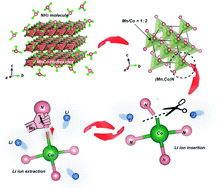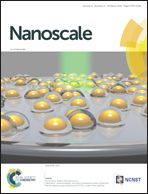Lower ammoniation activation energy of CoN nanosheets by Mn doping with superior energy storage performance for secondary ion batteries†
Abstract
Cationic doping has been regarded as an effective strategy to improve the electrochemical performance of transition metal composites for lithium ion batteries (LIBs). Herein, we report manganese doped cobalt nitrides (Mn0.33Co0.67N) as a novel anode material for LIBs with a high reversible capacity close to 900 mA h g−1 after 150 cycles at a current density of 0.5 A g−1, which is superior to 749 mA h g−1 of undoped CoN. The most fascinating performance of Mn0.33Co0.67N is the rate capability, in which 91% of capacity is maintained when the current density increases ten-fold from 0.2 A g−1 to 2.0 A g−1. This enhanced electrochemical performance is attributed to the fact that Mn doping makes it faster to regenerate Co–N bonds, as evidenced by a calculated apparent ammoniation activation energy (Ea) decrease from 113 kJ mol−1 to 96 kJ mol−1. This fast regeneration of Co–N bonds upon conversion reactions is believed to prevent the nitride electrode from a partial loss of charge capacity upon high rate cycling, in turn facilitating the extrinsic pseudocapacitive contribution.



 Please wait while we load your content...
Please wait while we load your content...